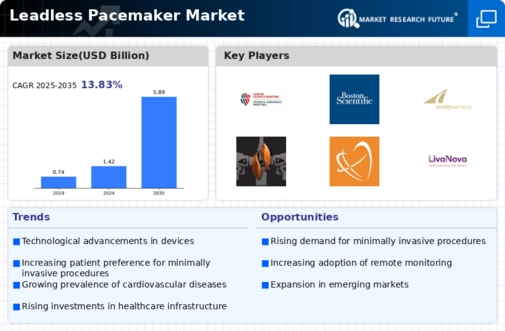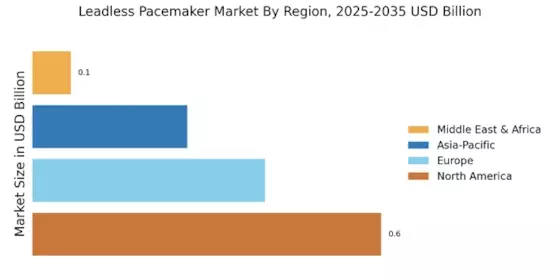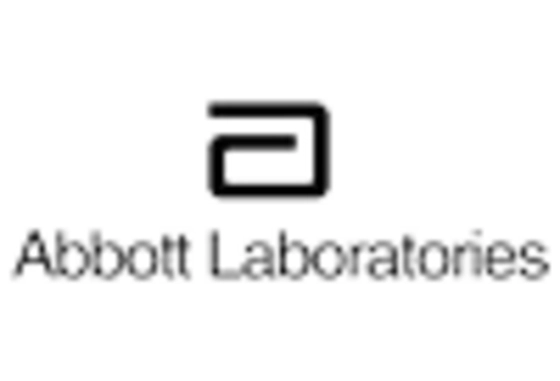Rising Healthcare Expenditure
The increase in healthcare expenditure is a significant driver for the Leadless Pacemaker Market. As countries allocate more resources to healthcare, there is a growing focus on advanced medical technologies that improve patient care. This trend is particularly evident in regions where healthcare budgets are expanding, allowing for the adoption of innovative solutions like leadless pacemakers. Market analysis indicates that healthcare spending is projected to rise, which may facilitate greater access to these devices. Consequently, as healthcare systems prioritize effective and efficient treatments, the leadless pacemaker market is expected to benefit from increased investment and adoption.
Regulatory Support and Approval
Regulatory support plays a pivotal role in the growth of the Leadless Pacemaker Market. Favorable regulatory frameworks and expedited approval processes for innovative medical devices are encouraging manufacturers to invest in leadless technology. Recent approvals from regulatory bodies have paved the way for new entrants and established companies to introduce advanced leadless pacemakers to the market. This regulatory backing not only enhances consumer confidence but also stimulates competition among manufacturers, leading to further innovations. As more devices receive approval, the market is likely to expand, providing patients with a wider array of treatment options.
Increasing Incidence of Cardiac Disorders
The rising prevalence of cardiac disorders is a critical driver for the Leadless Pacemaker Market. As the population ages, the incidence of conditions such as atrial fibrillation and heart block is expected to increase, necessitating more effective treatment options. Data suggests that cardiovascular diseases account for a significant percentage of global mortality, prompting healthcare systems to seek innovative solutions. Leadless pacemakers offer a less invasive alternative to traditional devices, which may lead to quicker recovery times and reduced hospital stays. This growing demand for effective cardiac care solutions is likely to propel the leadless pacemaker market forward, as healthcare providers aim to improve patient outcomes while managing costs.
Patient Preference for Minimally Invasive Procedures
There is a notable shift in patient preference towards minimally invasive procedures, which is significantly influencing the Leadless Pacemaker Market. Patients are increasingly seeking options that reduce recovery time and minimize surgical risks. Leadless pacemakers, which eliminate the need for leads and associated complications, align well with this trend. Market data indicates that a substantial portion of patients express a preference for leadless technology due to its reduced risk of infection and improved comfort. As awareness of these benefits spreads, it is anticipated that the demand for leadless pacemakers will continue to rise, further solidifying their position in the cardiac device market.
Technological Advancements in Leadless Pacemaker Market
The Leadless Pacemaker Market is experiencing a surge in technological advancements that enhance device performance and patient outcomes. Innovations such as miniaturization and improved battery life are making leadless pacemakers more appealing to both patients and healthcare providers. For instance, the introduction of wireless communication capabilities allows for remote monitoring, which is becoming increasingly important in patient management. According to recent data, the market for leadless pacemakers is projected to grow at a compound annual growth rate of approximately 20% over the next five years, driven by these technological improvements. As these devices become more sophisticated, they are likely to capture a larger share of the overall pacemaker market, indicating a shift in preference towards leadless solutions.


















Leave a Comment